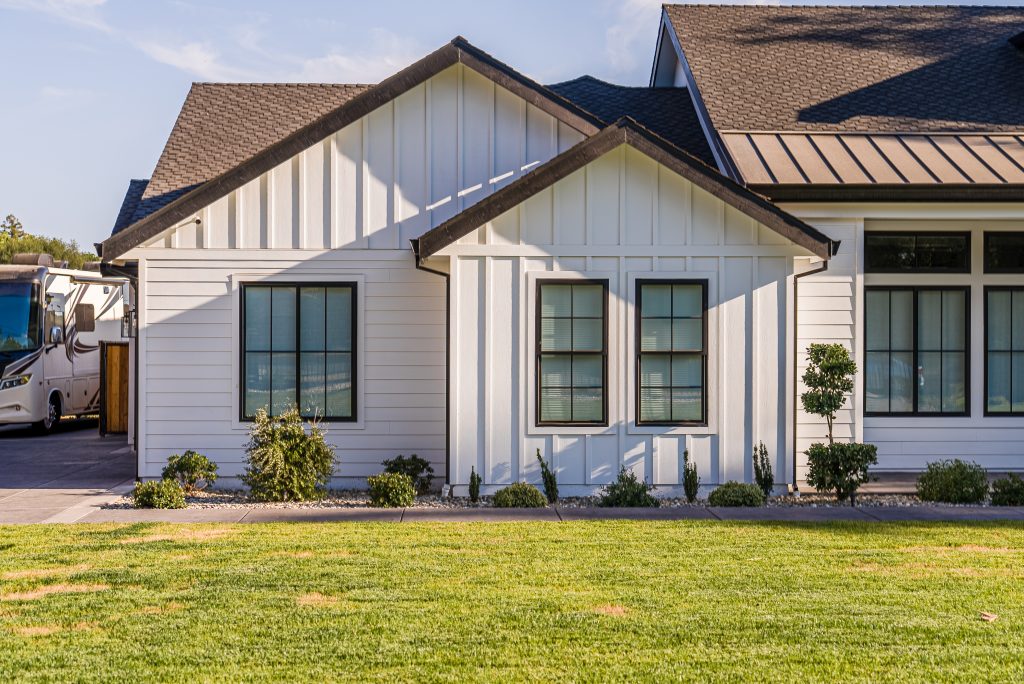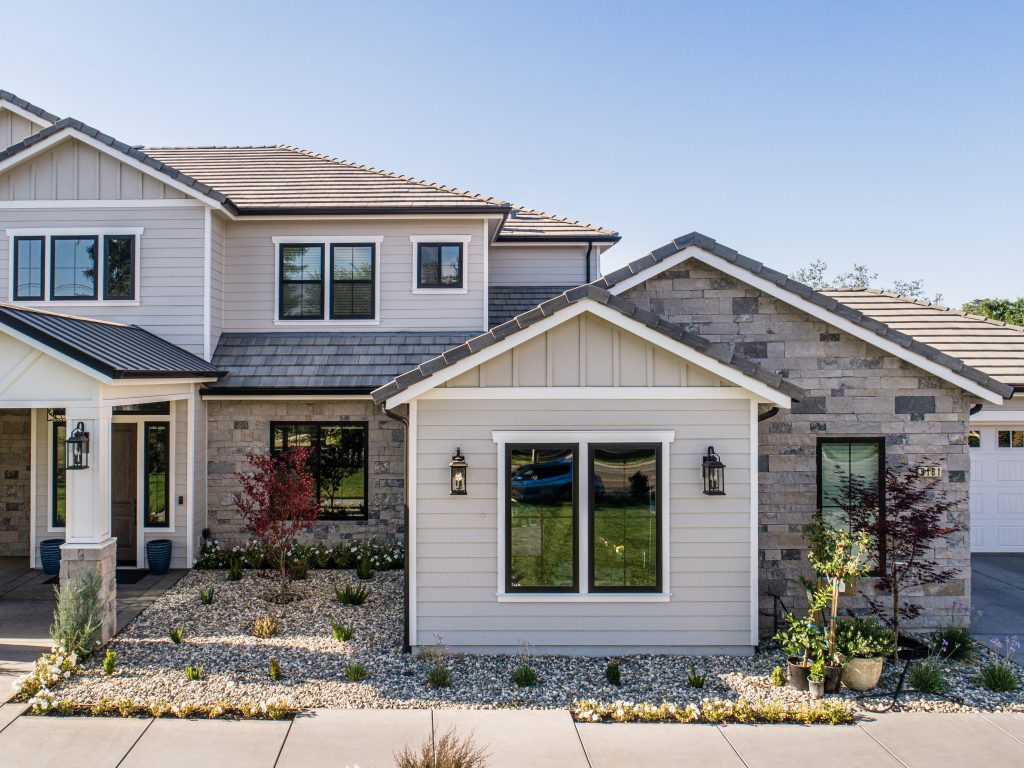In the realm of construction, siding isn’t just an aesthetic choice—it’s a shield, protecting structures from external elements. As the world leans towards sustainability, the siding industry isn’t lagging. The debate between traditional and eco-friendly siding materials is more than just about looks; it’s about the future of our planet. Did you know? The right siding can reduce a building’s energy consumption by up to 20%.

The Role of Siding in Construction
Siding serves as a building’s armor, defending against weather extremes and potential damages. It’s not just about protection; siding significantly influences a structure’s thermal performance. A well-chosen material can drastically reduce energy bills, making the interior comfortable regardless of the season. Moreover, siding plays a pivotal role in determining a building’s aesthetic appeal. Think of it as the skin of a structure, offering a glimpse into its architectural soul. Interestingly, certain siding materials can even boost property values, making them a smart investment for forward-thinking homeowners and developers. In essence, siding is the silent workhorse of construction, multitasking to ensure both form and function coexist seamlessly.
Traditional Siding Materials
The construction industry has long relied on tried-and-true siding materials. These materials have stood the test of time, offering both aesthetic and functional benefits. Let’s delve into some of the most prevalent traditional siding options.
Vinyl Siding
Vinyl siding, a polymer-based material, dominates the American housing market. It’s known for its durability and low maintenance. Resistant to pests and moisture, it promises longevity without frequent upkeep. An interesting fact: Vinyl doesn’t rot or corrode, making it a favorite for homes in diverse climates.
Wood Siding
Wood, with its natural allure, has graced homes for centuries. Cedar and redwood are popular choices, known for their resistance to decay. Wood siding offers versatility in design, from shingles to panels. However, it demands regular maintenance to combat potential moisture damage. A tidbit for history buffs: Colonial American homes often showcased wood siding, a testament to its enduring appeal.
Aluminum Siding
Aluminum, lightweight yet sturdy, offers a rust-free siding solution. It’s non-combustible, making it a safer choice in fire-prone areas. With its ability to mimic wood’s texture, aluminum provides a modern twist to traditional aesthetics. A noteworthy point: Aluminum siding, due to its reflective properties, can aid in energy efficiency, especially in sun-drenched locales.



Each of these traditional materials brings unique advantages to the table. The key lies in understanding the specific needs of a project and choosing accordingly.
Eco-friendly Siding Alternatives
As the construction industry evolves, the push for sustainable solutions grows stronger. Siding, a crucial component of building exteriors, hasn’t been left behind. Let’s explore some eco-friendly alternatives that are making waves.
Recycled Steel and Aluminum Siding
Metal siding, when crafted from recycled materials, takes sustainability up a notch. Recycled steel and aluminum sidings are not only eco-friendly but also incredibly durable. They resist warping and rotting, ensuring longevity. Intriguingly, using recycled metals reduces carbon footprints by a staggering 75%.
Fiber Cement Siding
Fiber cement siding is a blend of cement, sand, and cellulose fibers. This composition results in a siding material that’s both robust and sustainable. It mimics the appearance of wood but demands less upkeep. A fascinating fact: Fiber cement is termite-resistant and non-flammable, making it a top choice for safety-conscious builders.
Reclaimed Wood Siding
Reclaimed wood, sourced from old barns or warehouses, offers an eco-friendly siding alternative with a rich history. Every plank tells a story, adding character to modern structures. Beyond aesthetics, using reclaimed wood reduces deforestation and waste in landfills. Did you know? Some reclaimed wood sidings come from structures over a century old, showcasing wood’s enduring charm.
Embracing these eco-friendly siding alternatives not only benefits the environment but also adds unique character and value to structures. As the industry continues to innovate, these materials represent the vanguard of sustainable construction.

Comparative Analysis
In the realm of construction, choices often boil down to a balance between cost, durability, and environmental impact. Let’s dissect how traditional and eco-friendly siding materials measure up in these domains.
Cost Comparison
Traditional materials like vinyl often have a lower upfront cost, making them attractive for budget-conscious projects. However, eco-friendly alternatives, though pricier initially, can offer long-term savings. For instance, reclaimed wood, despite its premium price, can lead to energy savings over time. Surprisingly, recycled metal siding is often competitively priced, debunking myths about sustainable options always being costlier.
Durability and Maintenance
Vinyl and aluminum boast impressive durability with minimal maintenance. Yet, fiber cement siding rivals this longevity, resisting common issues like termites and fire. Reclaimed wood, while exuding timeless charm, does demand vigilant care to prevent moisture damage. An interesting tidbit: Some eco-friendly materials come with extended warranties, reflecting their robust nature.
Environmental Impact
The environmental toll of siding materials can’t be ignored. Traditional options, especially when sourced unsustainably, contribute to deforestation and increased carbon footprints. On the flip side, using recycled or reclaimed materials drastically reduces waste and conserves resources. A compelling fact: Opting for sustainable siding can reduce a building’s carbon footprint by up to 40%.
In conclusion, while traditional siding materials have their merits, eco-friendly alternatives offer compelling advantages, especially when viewed through the lens of long-term value and environmental stewardship.
Case Studies
In the intricate world of siding, real-world applications often speak louder than mere specifications. Let’s delve into some exemplary projects that showcase the prowess of top-tier siding materials and craftsmanship.
Burlingame Residence
1×4 Nickel Gap Clear Heart Cedar Siding | Boral TruExterior 1×10 Square Channel Siding
Located in Burlingame, this residence is a masterclass in blending aesthetics with functionality. True Build Group’s expertise shines through, with the house serving as a testament to quality craftsmanship. For a deeper dive into Boral TruExterior Channel Siding, visit truexterior.com.
Pahatsi Rd Residence
Soda Springs | T1-11 Main Siding | Cedar 1×6 Tongue and Groove Front and Entry Accent
Nestled in Soda Springs, the Pahatsi Rd Residence epitomizes architectural grandeur. True Build Group’s signature touch is evident, marrying aesthetic beauty with top-notch quality.
Residence Orangevale – James Hardie Lap Siding
James Hardie Lap Siding with James Hardie Board and Batten gable accent
Residence Orangevale stands as a beacon of superior residential siding. True Build Group’s commitment to quality is evident. For more on James Hardie products, explore jameshardie.com.
Residential Siding
Carmichael | James Hardie Board and Batten with Horizontal Lap siding
True Build Group sets the gold standard in residential siding. Their work in Carmichael, using James Hardie products, redefines home aesthetics. Dive deeper into James Hardie offerings at jameshardie.com.
Commercial Siding Project
Trespa HPL Cladding | Marin County Grocery Chain
True Build Group’s prowess isn’t limited to residential projects. Their Trespa HPL cladding work on a Marin County grocery chain underscores their commercial expertise. Discover more about Trespa at trespa.com.
Downtown Residential
San Francisco | James Hardie Reveal Panel System with Horizontal Lap siding
In San Francisco’s bustling landscape, a multi-family housing project stands out. The James Hardie Reveal Panel system, juxtaposed with horizontal lap siding, offers a modern, eye-catching aesthetic. For insights into the James Hardie Reveal Panel System, visit jameshardiepros.com.
These case studies underscore the transformative power of quality siding, both in terms of aesthetics and functionality. True Build Group’s projects serve as benchmarks in the industry, showcasing the potential of top-tier materials and craftsmanship.

The world of siding is vast, with materials and techniques evolving rapidly. As we’ve journeyed through traditional and eco-friendly alternatives, the importance of informed choices becomes evident. True Build Group’s projects, showcased in our case studies, underline the transformative potential of expert craftsmanship paired with top-tier materials. It’s fascinating to note that the right siding can enhance a building’s energy efficiency by up to 30%. As the construction industry marches forward, sustainability and aesthetics will remain intertwined. For builders, architects, and homeowners alike, the future promises innovative solutions that don’t compromise on quality or environmental responsibility. In this dynamic landscape, staying informed and prioritizing both form and function will be the keys to success.

